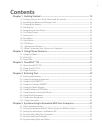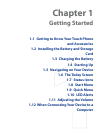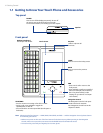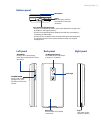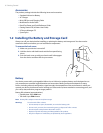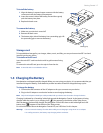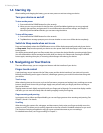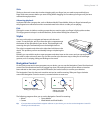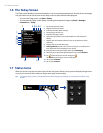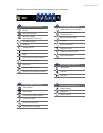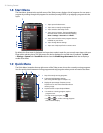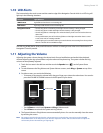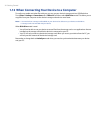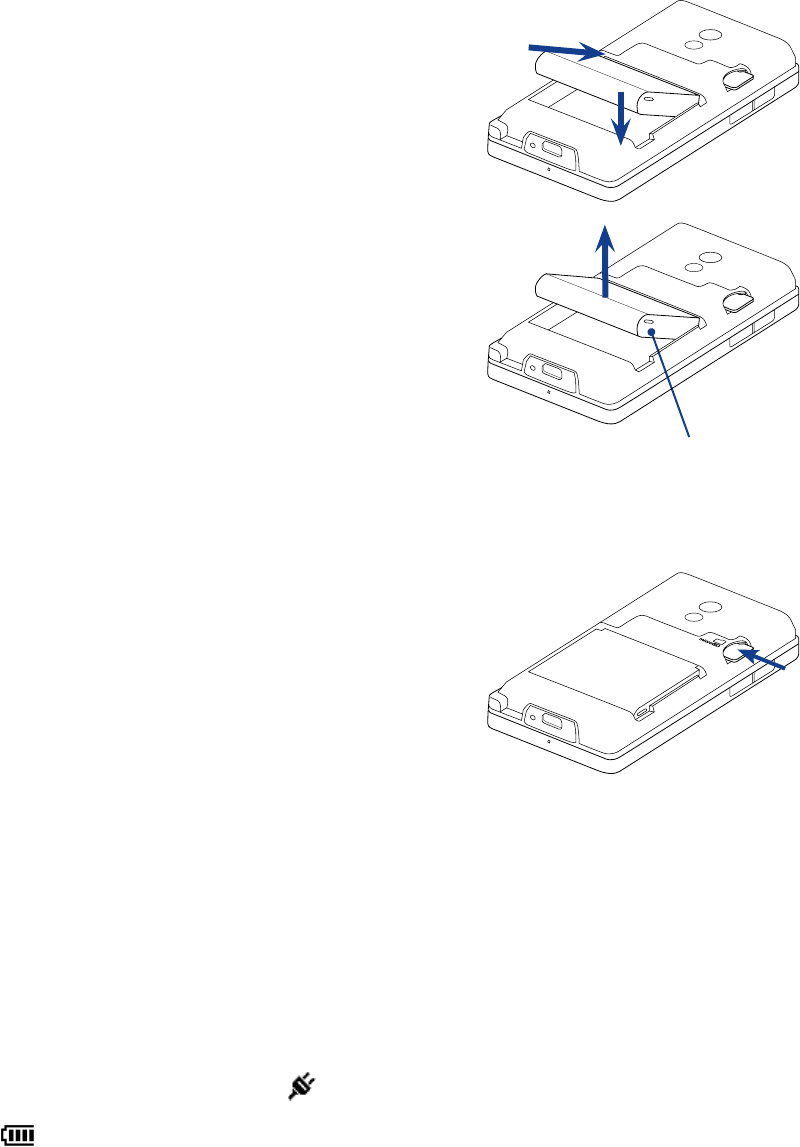
Getting Started 17
To install the battery
1. Align the battery’s exposed copper contacts with the battery
connectors inside the battery compartment.
2. Insert the contact’s side of the battery first and then gently
push the battery into place.
3. Replace the back cover.
To remove the battery
1. Make sure your device is turned off.
2. Remove the back cover.
3. The bottom right side of the battery has a protruding grip. Lift
the protruding grip to remove the battery.
Battery grip
Storage card
To have additional storage for your images, videos, music, and files, you can purchase a microSD™ card and
install it into the your device.
To install a microSD card
Insert the microSD™ card into the slot with its gold contacts facing
down.
To remove the microSD card, press it to eject it from the slot.
Note A microSD card is not included in the box.
1.3 Charging the Battery
New batteries are shipped partially charged. Before you start using your device, it is recommended that you
install and charge the battery. Some batteries perform best after several full charge/discharge cycles.
To charge the battery
1. Connect the USB connector of the AC adapter to the sync connector on your device.
2. Plug in the AC adapter to an electrical outlet to start charging the battery.
Note Only the AC adapter and USB sync cable provided with your device must be used to charge the device.
Charging is indicated by a “breathing” white light around the Navigation Control. As the battery is being
charged while the power is on, a charging icon (
) also appears in the title bar of the Today screen.
After the battery has been fully charged, the Navigation Control LED shows a solid white light and a full
battery icon ( ) appears in the title bar of the Today screen.
For more information about the Navigation Control LED, see “LED Alerts” in this chapter.
Warning! • Do not remove the battery from the device while you are charging it using the AC or car adapter.
• As a safety precaution, the battery stops charging when it overheats.



